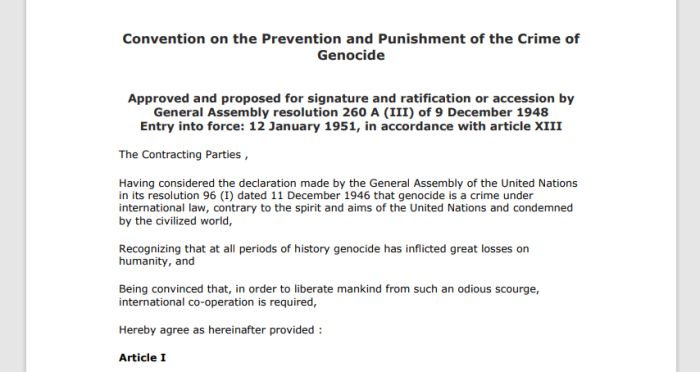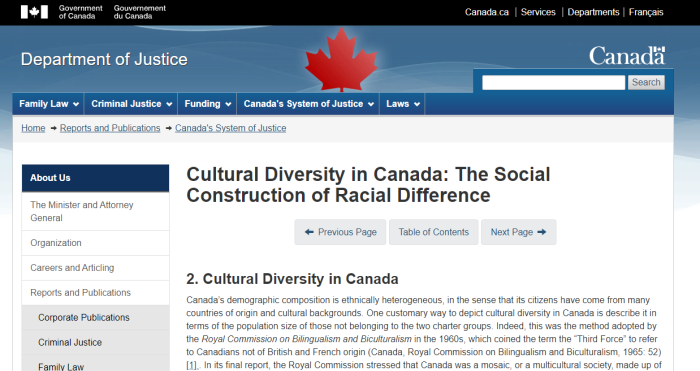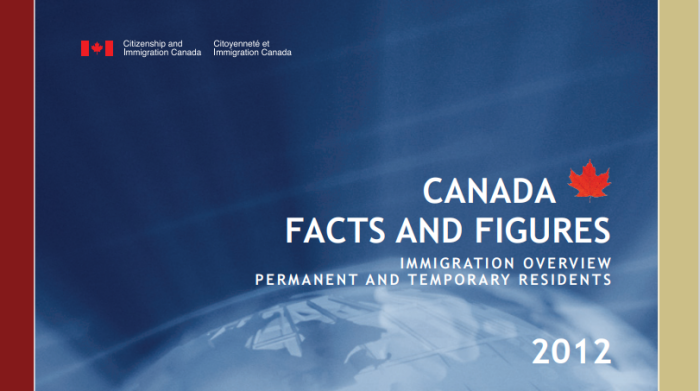


In Western societies, there seems to be the mentality that populations must always grow. Furthermore, large numbers of people from very different backgrounds should be brought in to make this happen. At least, this is what public figures and media heads say, regardless of what the citizens want.
That being said, this “diversity” push is something that has only existed for the last 50 years or so. Before that, there was a focus on maintaining the demographic makeup. Let’s take a look.
A good starting place would be to see how many people are coming to Canada every year. Although this doesn’t tell the entire story, the numbers of Permanent Residents is a good place to start.
| YEAR | PERMANENT RESIDENTS | % OF POPULATION |
|---|---|---|
| 1852 | 29,307 | — |
| 1853 | 29,464 | — |
| 1854 | 37,263 | — |
| 1855 | 25,296 | — |
| 1856 | 22,544 | — |
| 1857 | 33,854 | — |
| 1858 | 12,339 | — |
| 1859 | 6,300 | — |
| 1860 | 6,276 | 0.2 |
| 1861 | 13,589 | 0.4 |
| 1862 | 18,294 | 0.6 |
| 1863 | 21,000 | 0.6 |
| 1864 | 24,779 | 0.7 |
| 1865 | 18,958 | 0.6 |
| 1866 | 11,427 | 0.3 |
| 1867 | 10,666 | 0.3 |
| 1868 | 12,765 | 0.4 |
| 1869 | 18,630 | 0.5 |
| 1870 | 24,706 | 0.7 |
| 1871 | 27,773 | 0.8 |
| 1872 | 36,578 | 1.0 |
| 1873 | 50,050 | 1.3 |
| 1874 | 39,373 | 1.0 |
| 1875 | 27,382 | 0.7 |
| 1876 | 25,633 | 0.6 |
| 1877 | 27,082 | 0.7 |
| 1878 | 29,807 | 0.7 |
| 1879 | 40,492 | 1.0 |
| 1880 | 38,505 | 0.9 |
| 1881 | 47,991 | 1.1 |
| 1882 | 112,458 | 2.6 |
| 1883 | 133,624 | 3.0 |
| 1884 | 103,824 | 2.3 |
| 1885 | 76,169 | 1.7 |
| 1886 | 69,152 | 1.5 |
| 1887 | 84,526 | 1.8 |
| 1888 | 88,766 | 1.9 |
| 1889 | 91,600 | 1.9 |
| 1890 | 75,067 | 1.6 |
| 1891 | 82,165 | 1.7 |
| 1892 | 30,996 | 0.6 |
| 1893 | 29,633 | 0.6 |
| 1894 | 20,829 | 0.4 |
| 1895 | 18,790 | 0.4 |
| 1896 | 16,835 | 0.3 |
| 1897 | 21,716 | 0.4 |
| 1898 | 31,900 | 0.6 |
| 1899 | 44,543 | 0.9 |
| 1900 | 41,681 | 0.8 |
| 1901 | 55,747 | 1.0 |
| 1902 | 89,102 | 1.6 |
| 1903 | 138,660 | 2.5 |
| 1904 | 131,252 | 2.3 |
| 1905 | 141,465 | 2.4 |
| 1906 | 211,653 | 5.3 |
| 1907 | 272,409 | 4.2 |
| 1908 | 143,326 | 2.2 |
| 1909 | 173,694 | 2.6 |
| 1910 | 286,839 | 4.1 |
| 1911 | 331,288 | 4.6 |
| 1912 | 375,756 | 5.1 |
| 1913 | 400,870 | 5.3 |
| 1914 | 150,484 | 1.9 |
| 1915 | 33,665 | 0.4 |
| 1916 | 55,914 | 0.7 |
| 1917 | 72,910 | 0.9 |
| 1918 | 41,845 | 0.5 |
| 1919 | 107,698 | 1.3 |
| 1920 | 138,824 | 1.6 |
| 1921 | 91,728 | 1.0 |
| 1922 | 64,224 | 0.7 |
| 1923 | 133,729 | 1.5 |
| 1924 | 124,164 | 1.4 |
| 1925 | 84,907 | 0.9 |
| 1926 | 135,982 | 1.4 |
| 1927 | 158,886 | 1.6 |
| 1928 | 166,783 | 1.7 |
| 1929 | 164,993 | 1.6 |
| 1930 | 104,806 | 1.0 |
| 1931 | 27,530 | 0.3 |
| 1932 | 20,591 | 0.2 |
| 1933 | 14,382 | 0.1 |
| 1934 | 12,476 | 0.1 |
| 1935 | 11,277 | 0.1 |
| 1936 | 11,643 | 0.1 |
| 1937 | 15,101 | 0.1 |
| 1938 | 17,244 | 0.2 |
| 1939 | 16,994 | 0.2 |
| 1940 | 11,324 | 0.1 |
| 1941 | 9,329 | 0.1 |
| 1942 | 7,576 | 0.1 |
| 1943 | 8,504 | 0.1 |
| 1944 | 12,801 | 0.1 |
| 1945 | 22,722 | 0.2 |
| 1946 | 71,719 | 0.6 |
| 1947 | 64,127 | 0.5 |
| 1948 | 125,414 | 1.0 |
| 1949 | 95,217 | 0.7 |
| 1950 | 73,912 | 0.5 |
| 1951 | 194,391 | 1.4 |
| 1952 | 164,498 | 1.1 |
| 1953 | 168,868 | 1.1 |
| 1954 | 154,227 | 1.0 |
| 1955 | 109,946 | 0.7 |
| 1956 | 164,857 | 1.0 |
| 1957 | 282,164 | 1.7 |
| 1958 | 124,851 | 0.7 |
| 1959 | 106,928 | 0.6 |
| 1960 | 104,111 | 0.6 |
| 1961 | 71,698 | 0.4 |
| 1962 | 74,856 | 0.4 |
| 1963 | 93,151 | 0.5 |
| 1964 | 112,606 | 0.6 |
| 1965 | 146,758 | 0.7 |
| 1966 | 194,743 | 1.0 |
| 1967 | 222,876 | 1.1 |
| 1968 | 183,974 | 0.9 |
| 1969 | 164,531 | 0.8 |
| 1970 | 147,713 | 0.7 |
| 1971 | 121,900 | 0.6 |
| 1972 | 122,006 | 0.6 |
| 1973 | 184,200 | 0.8 |
| 1974 | 218,465 | 1.0 |
| 1975 | 187,881 | 0.8 |
| 1976 | 149,429 | 0.6 |
| 1977 | 114,914 | 0.5 |
| 1978 | 86,313 | 0.4 |
| 1979 | 112,093 | 0.5 |
| 1980 | 43,137 | 0.6 |
| 1981 | 128,641 | 0.5 |
| 1982 | 121,175 | 0.5 |
| 1983 | 89,186 | 0.4 |
| 1984 | 88,272 | 0.3 |
| 1985 | 84,347 | 0.3 |
| 1986 | 99,355 | 0.4 |
| 1987 | 152,079 | 0.6 |
| 1988 | 161,588 | 0.6 |
| 1989 | 191,555 | 0.7 |
| 1990 | 86,452 | 0.6 |
| 1991 | 232,806 | 0.8 |
| 1992 | 254,790 | 0.9 |
| 1993 | 256,641 | 0.9 |
| 1994 | 224,385 | 0.8 |
| 1995 | 212,865 | 0.7 |
| 1996 | 226,071 | 0.8 |
| 1997 | 216,035 | 0.7 |
| 1998 | 174,195 | 0.6 |
| 1999 | 189,951 | 0.6 |
| 2000 | 227,456 | 0.7 |
| 2001 | 250,637 | 0.8 |
| 2002 | 229,048 | 0.7 |
| 2003 | 221,349 | 0.7 |
| 2004 | 235,823 | 0.7 |
| 2005 | 262,242 | 0.8 |
| 2006 | 251,640 | 0.8 |
| 2007 | 236,753 | 0.7 |
| 2008 | 247,247 | 0.7 |
| 2009 | 252,172 | 0.7 |
| 2010 | 280,689 | 0.8 |
| 2011 | 248,748 | 0.7 |
| 2012 | 257,887 | 0.7 |
Source for this chart is that data provided on page 3. Also, data for some earlier years is provided by Statistics Canada.
Even though large numbers of people have been coming to Canada for a long time, there was still a lot of social cohesion. This is because migrants were primarily selected from countries with a very similar makeup and composition.
Historically, the numeric predominance of those of British and French origin was unquestionable. Before the great wave of European migration to Canada between 1896 and the beginning of the First World War, Canada’s population was indeed mainly made up of those of British and French origin. For example, the 1871 Census of Canada shows that 60 percent of Canada’s 3.5 million people were of British origin, and 30 percent French origin; Europeans not of British nor French origin accounted for only 7 percent of Canada’s population in 1871 as well as in 1881 (Kalbach, 1990: 24). This demographic composition basically persisted until the turn of the century.
The wave of immigration to Canada prior to the First World War began to increase the stock of Europeans not from British or French origin. Between 1896 and 1914, over three million immigrants came to Canada. When the supply of emigrants from England and Western Europe was dwindling, Canada began accepting people from Eastern and Southern Europe, including Poles, Ukrainians, Hutterites and Doukhobors. In the period between the two world wars from 1915 to 1945, another two million immigrants came to Canada (Statistics Canada, 1983: A125-163).
The census data of Canada indicate that Canadians of European origin other than British and French increased from 8.5 percent of the total population in 1901 to 14.2 percent in 1921, and to 17.8 percent in 1941 (Kalbach, 1990: 24). In contrast, Canadians of British origin declined in relative terms from 57 percent of the total population in 1901 to 50 percent in 1941, but those of French origin remained at around 30 percent of the total population in 1901 and in 1941. In short, if the composition of Canadians of European origin other than British and French is used as an indicator of ethnic plurality, then there was an increase in diversity between 1901 and 1941. However, Canada’s population in 1941, as in 1871, was made up of people mainly of European origin, which accounted for 98 percent of the total population in 1941 and in 1871, despite the fact that the population had increased from 3.5 million people in 1871 to 11.5 million people in 1941.
The Government of Canada openly admits that traditionally, the bulk of immigration came from Europe. More specifically, it came from the West, from places like Britain and France. (See archive).
And what was the result of this? Very little in terms of enclaves or balkanization. The population grew, but without the genocidal “multicultural” push that goes around now. This type of system focused on cultural compatibility, something that would be unthinkable today.
| TIME PERIOD | REGION | # OF MIGRANTS | % OF TOTAL |
|---|---|---|---|
| 1968-1972 | Europe | 387,670 | 52.6 |
| United States | 114,615 | 15.5 | |
| Central/South America | 24,863 | 3.4 | |
| Carribean | 53,100 | 7.2 | |
| Asia | 112,584 | 15.3 | |
| Africa | 22,014 | 3 | |
| Australia | 18,656 | 2.5 | |
| Oceania | 0 | 0 | |
| Not Stated | 3,622 | 0.5 | |
| Total | 737,124 | 100 | |
| 1973-1977 | Europe | 324,131 | 37.9 |
| United States | 102,141 | 11.9 | |
| Central/South America | 63,598 | 7.4 | |
| Asia | 216,837 | 25.4 | |
| Africa | 42,748 | 5 | |
| Australia | 10,870 | 1.3 | |
| Oceania | 7,937 | 0.9 | |
| Not Stated | 0 | 0 | |
| Total | 854,889 | 100 | |
| 1978-1982 | Europe | 196,546 | 33.2 |
| United States | 49,407 | 8.4 | |
| Central/South America | 36,262 | 6.1 | |
| Carribean | 39,362 | 6.7 | |
| Asia | 236,596 | 40 | |
| Africa | 21,946 | 3.7 | |
| Australia | 6,438 | 1.1 | |
| Oceania | 4,502 | 0.8 | |
| Not Stated | 232 | 0 | |
| Total | 591,291 | 100 | |
| 1983-1987 | Europe | 124.344 | 24.42 |
| United States | 36,214 | 7.1 | |
| Central/South America | 56,442 | 11 | |
| Carribean | 39,079 | 7.6 | |
| Asia | 226,326 | 44.1 | |
| Africa | 24,027 | 4.7 | |
| Australia | 2,774 | 0.5 | |
| Oceania | 3,771 | 0.7 | |
| Not Stated | 38 | 0 | |
| Total | 513,015 | 100 | |
| 1988-1992 | Europe | 237,666 | 22.6 |
| United States | 33,686 | 3.2 | |
| Central/South America | 91,061 | 8.7 | |
| Carribean | 59,911 | 5.7 | |
| Asia | 545,410 | 51.9 | |
| Africa | 70,744 | 6.7 | |
| Australia | 4,771 | 0.5 | |
| Oceania | 8,534 | 0.8 | |
| Not Stated | 0 | 0 | |
| Total | 1,051,783 | 100 | |
| 1993-1995 | Europe | 126,509 | 18.3 |
| United States | 19,433 | 2.8 | |
| Central/South America | 39,199 | 5.7 | |
| Carribean | 36,599 | 5.3 | |
| Asia | 418,016 | 60.4 | |
| Africa | 45,255 | 6.5 | |
| Australia | 3,476 | 0.5 | |
| Oceania | 3,791 | 0.5 | |
| Not Stated | 0 | 0 | |
| Total | 692,198 | 100 |
The Government’s own data tables show just how rapidly the source countries have been shifting. While immigration to Canada used to mainly be from Europe, it’s now overwhelmingly Asian. Looking at the Annual Immigration Reports to Parliament in recent years, this trend has only gotten worse.
Now, were the voters ever asked if they wanted to become minorities?

Article I
The Contracting Parties confirm that genocide, whether committed in time of peace or in time of war, is a crime under international law which they undertake to prevent and to punish.
Article II
In the present Convention, genocide means any of the following acts committed with intent to destroy, in whole or in part, a national, ethnical, racial or religious group, as such:
(a) Killing members of the group;
(b) Causing serious bodily or mental harm to members of the group;
(c) Deliberately inflicting on the group conditions of life calculated to bring about its physical destruction in whole or in part;
(d) Imposing measures intended to prevent births within the group;
(e) Forcibly transferring children of the group to another group.
Article III
The following acts shall be punishable:
(a) Genocide;
(b) Conspiracy to commit genocide;
(c) Direct and public incitement to commit genocide;
(d) Attempt to commit genocide;
(e) Complicity in genocide.
Article IV
Persons committing genocide or any of the other acts enumerated in article III shall be punished, whether they are constitutionally responsible rulers, public officials or private individuals.
A Government doesn’t have to round up and execute its citizens in order to commit genocide. Another way is to flood the country with large numbers of very different people, with the purpose and intent of diluting and erasing the host population. Instead of having a national identity, society becomes “multicultural”.
One caveat of course: the people coming in are encouraged to maintain their own identities, customs, traditions, and language. The populations being replaced are expected to endlessly accommodate that.
If a larger population is needed, it’s entirely possible to grow it organically. However, modern efforts across the West can best be explained as attempting to erase groups entirely.
A little self promotion: Borderless Canada is still available online. Learn about what’s been going on in this country. Virtually all major issues can be directly tied to immigration and border security, and it’s not racist or bigoted to discuss these hard truths.
(1) https://publications.gc.ca/collections/collection_2013/cic/Ci1-8-2012-eng.pdf
(2) https://www12.statcan.gc.ca/census-recensement/2011/as-sa/98-310-x/2011003/fig/fig3_1-2-eng.cfm
(3) https://justice.gc.ca/eng/rp-pr/csj-sjc/jsp-sjp/rp02_8-dr02_8/t2.html
(4) https://archive.ph/QkUeu
(5) https://justice.gc.ca/eng/rp-pr/csj-sjc/jsp-sjp/rp02_8-dr02_8/p2.html
(6) https://archive.ph/PzcO3
(7) https://www.un.org/en/genocideprevention/genocide-convention.shtml
(8) https://www.un.org/en/genocideprevention/documents/atrocity-crimes/Doc.1_Convention%20on%20the%20Prevention%20and%20Punishment%20of%20the%20Crime%20of%20Genocide.pdf
(9) UN Convention On Punishing And Preventing Genocide

they stopped letting whitey in, a long time ago!! WE know what they are doing.
The beginning of the end was the pill. The elite have been breeding mother out of females since WW2.